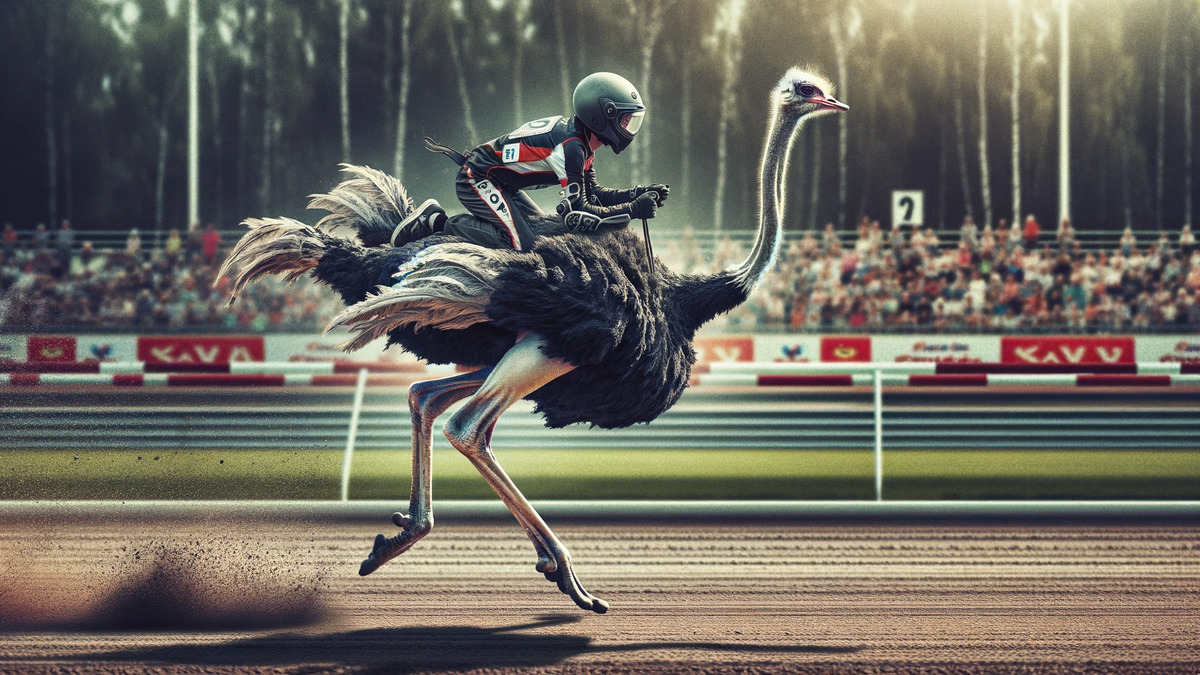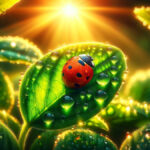Known as the world’s largest bird, the ostrich is a bird that cannot fly. However, they can often reach speeds of 60 mph (about 95 km/h) over short distances, and their rapid acceleration and speed are a major defence mechanism against predators.
And not simply fast, this bird is also incredibly agile. It can change direction quickly and effectively when fleeing predators. If you are talking about a cheetah and an ostrich, the cheetah is usually faster, but the ostrich often manages to escape by adding a number of quick turns to its run. It is like the difference between an F1 car that is fast in a straight line and a WRC rally car that uses a lot of drifting to be able to handle rough roads. Which is ultimately faster depends on the environment.
The ostrich eye is known to be larger than its brain by about 2 inches (5 cm) in diameter. Although this is an unusual phenomenon, it does not reflect cognitive ability, but would indicate that vision is important to this bird.
Like chickens and other birds, they swallow pebbles and sand despite their lack of teeth, and process food in a unique way by mashing it with their gizzard, a specialised part of their stomach.
They lay the largest eggs of any bird in existence, each weighing as much as 24 chicken eggs.
In addition to their ability to run, they are also notable swimmers. This feature supports the theory that birds evolved from aquatic dinosaurs and provides an interesting insight into evolutionary biology.
Their long, muscular legs serve not only as running tools but also as weapons. They have powerful claws on both legs that enable them to deliver powerful kicks to fend off threats.
They are monogamous and can mate with several females in one breeding season. This is in contrast to the monogamous mating systems of many bird species, although this is not uncommon in animals.
For brood rearing, the male and female build a nest together and alternate between incubating their own eggs and those of other females.
Males are known for their spectacular courtship behaviour, in which they spread their wings and perform a bowing dance to the female.
Their distinctive plumage lacks the small hooks that hold the feathers of most birds in place, giving them a loose, soft appearance. Their distinctive plumage has historically been prized as a fashion statement.
Farming of cattle pigs, chickens and fish is well known. But there is also ostrich farming. The bird’s versatility in providing not only meat and eggs, but also feathers and hides, seems to have made it a successful agricultural industry in some parts of the world.
Ostrich meat is said to taste similar to lean beef. It is also low in fat and cholesterol and rich in calcium, iron and protein.
The lifespan in the wild is about 40-45 years, but with proper care, captive ostriches have been known to live for more than 50 years.
In terms of communication, ostriches can make a variety of sounds, including hissing, whistling and low rumbling noises. Males are also known to produce a distinctive ‘buzzing’ sound by inflating their necks. They are interesting and should be listened to.
Their long necks, often up to a metre long, allow them to probe their surroundings for potential danger from a considerable height. This is a beneficial adaptation that enhances their ability to escape predators and protect their offspring.
Unlike most birds, ostriches have only two toes. The larger, inner toe has a hoof-like claw.
Ostriches, like many other birds, are omnivorous. They feed on plants, seeds, fruit, insects and small vertebrates.
Despite their impressive size, ostriches are surprisingly good at camouflage. Their grey-brown plumage blends well into the sandy and savannah landscapes they normally inhabit.
A common misconception is that they bury their heads in the sand when threatened, but in fact this behaviour is a defensive strategy where they flatten to the ground to blend into the terrain.
Although they cannot fly, they have very large wings, which are useful in a variety of ways, including the mating display already mentioned, as well as providing shade to protect chicks from the hot sun and to maintain balance while running at high speed.
Despite their somewhat intimidating size and strength, they are surprisingly docile. In captivity, they are also known to form close bonds with humans.



コメント